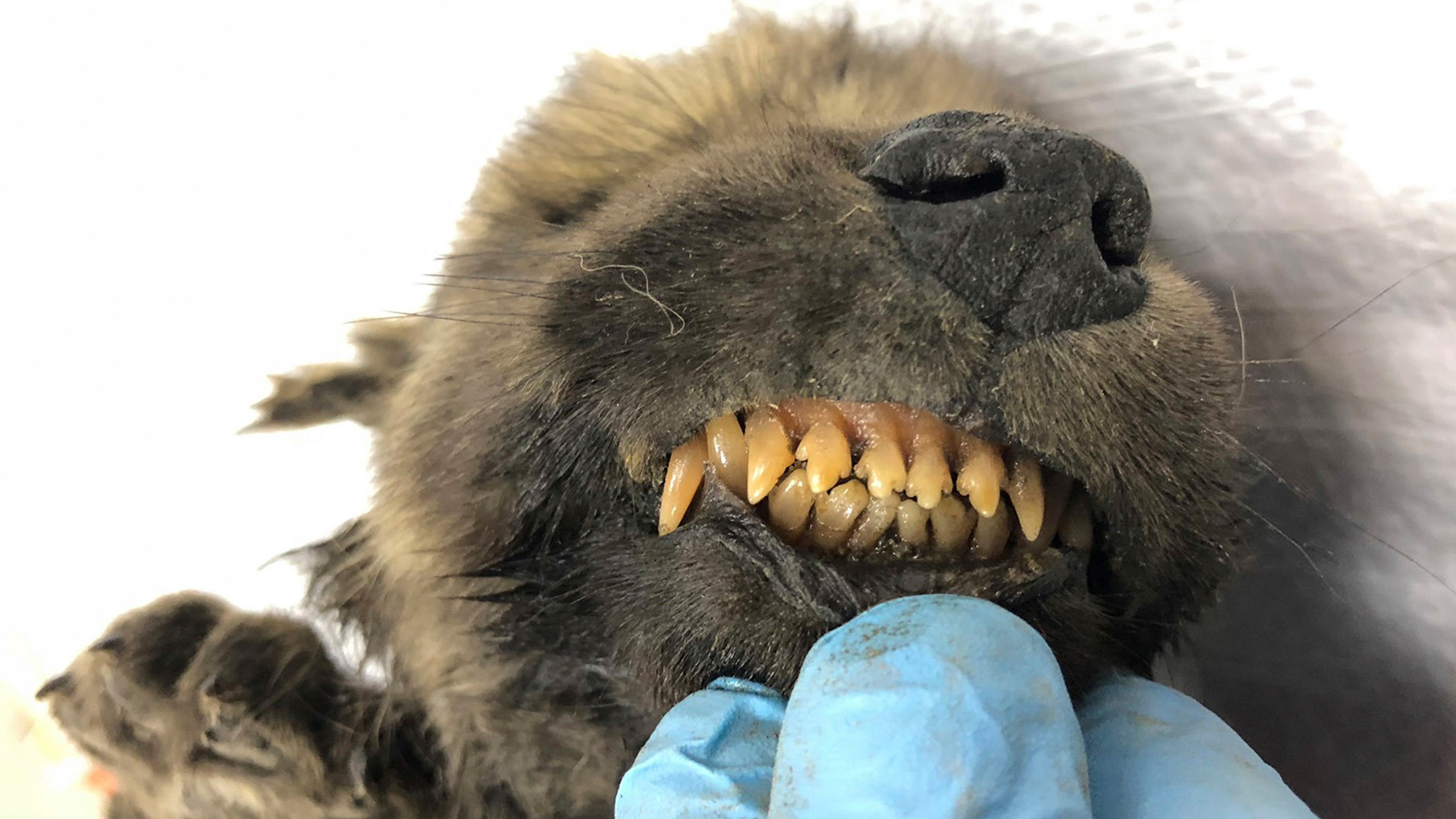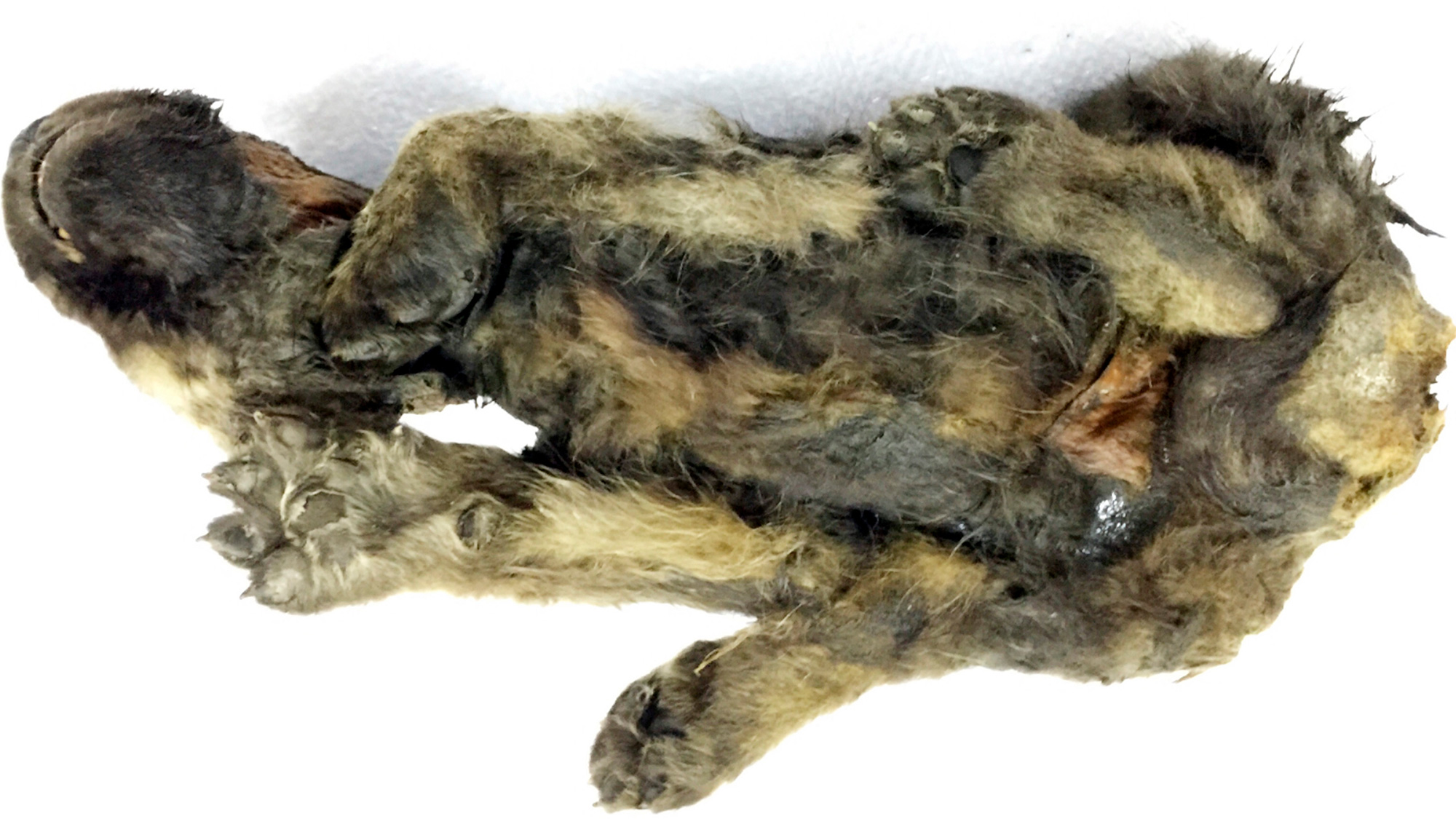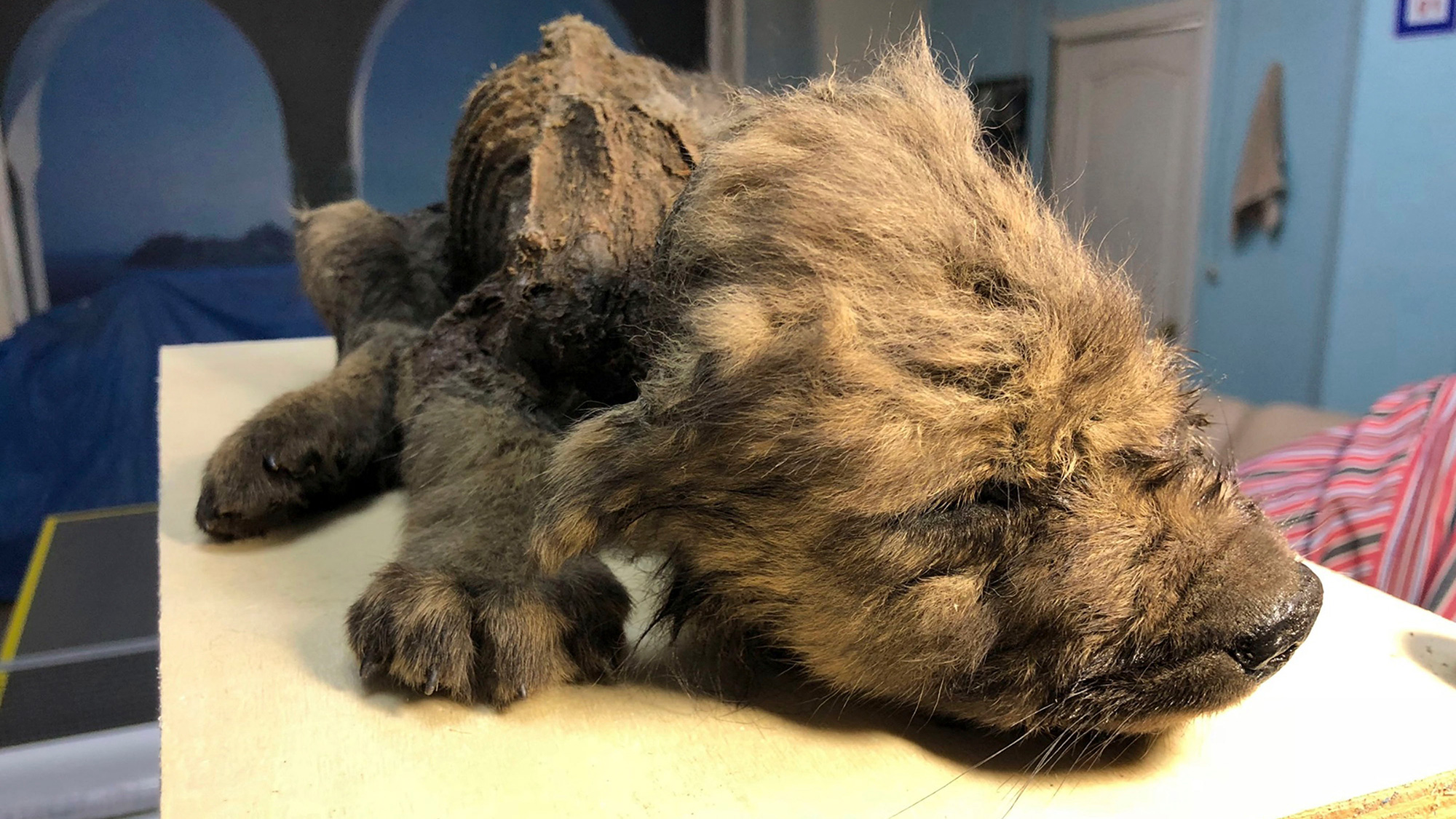Mummified Pup Died in Siberia 18,000 Years Ago ... And Might Be a Wolf (or Something Else)
The preserved pooch looks remarkably pettable — for a mummy.

A young pup that spent 18,000 years buried in Siberian permafrost looks remarkably lifelike and pettable — for a freeze-dried mummy. From its frozen tomb, the Ice Age canine's body emerged in near-perfect condition, retaining even the pads and nails on its small feet and plenty of hair, down to its tiny eyelashes and delicate whiskers.
The pup still had its milk teeth, suggesting it was under 2 months old when it died; The body is so well preserved that its resemblance to a wolf is clearly visible, The Siberian Times recently reported.
But is the youngster a wolf ... or a dog?
Dogs are descended from wolves, and their lineage may have split from their lupine ancestors' as early as 40,000 years ago, according to ancient DNA evidence. Scientists at the University of Stockholm's Centre for Palaeogenetics conducted genetic tests on the Siberian pup's remains, but they were unable to determine if the mummy represented a dog or a wolf, the Times reported.
Related: Photos: Is Ice Age Cat Mummy a Lion or a Lynx?
DNA analysis did tell the scientists that the pup was a male. They named it "Dogor" — "friend" in the Yakut language — though in English, the name references the mummy's uncertain status: dog or ... something else, according to the Times.

Researchers discovered the mummified pup during the summer of 2018 near the Indigirka River in Yakutia, in the northeastern part of Russia. The oldest known fossil of a domesticated dog dates to 14,700 years ago, though remains of dog-like canines are known from 35,000 years ago, another research team reported in 2017 in the journal Nature. In the study, the scientists suggested that dogs diverged genetically from their wolf ancestors between 36,900 and 41,500 years ago.
Sign up for the Live Science daily newsletter now
Get the world’s most fascinating discoveries delivered straight to your inbox.
What does this mean for the Siberian pup? A mummified canine dating to 18,000 years ago could be a dog, a wolf or possibly even a transitional form — an animal with traits of both species, the Times reported.
"This is intriguing," said Sergey Fedorov, a researcher with the North-Eastern Federal University in Yakutsk, Russia, and one of the scientists investigating the puppy. "We can’t wait to get results from further tests," he told the Times.
Preserved in ice

Over the past several years in Siberia, melting permafrost has released some astonishingly well-preserved examples of ancient animals. In 2017, paleontologists unearthed an astonishing mummy of a young horse from a crater in Yakutia; the 2-month-old foal lived 30,000 to 40,000 years ago and its body was whole and undamaged, with its skin and hooves intact. And in 2018, a man searching for mammoth tusks discovered the mummy of a young Ice Age feline. Like the newfound puppy, the wild kitten's species was hard to pin down, and experts suspect it could be a cave lion or a Eurasian lynx.
Then in June, a man walking by a river in Yakutia in Russia spied the enormous, severed head of an Ice Age wolf, dating to more than 40,000 years ago.
The frozen Siberian wilderness also recently revealed something more gruesome than ancient animal remains: a bag containing 54 severed human hands, buried in snow on a river island and found in 2018. Unlike the Ice Age mummies, the hands were modern in origin and were likely discarded illegally by a nearby forensic lab, according to Russian authorities.
- Mammoth Resurrection: 11 Hurdles to Bringing Back an Ice Age Beast
- Back to the Stone Age: 17 Key Milestones in Paleolithic Life
- Photos: Perfectly Preserved Baby Horse Unearthed in Siberian Permafrost
Originally published on Live Science.


Mindy Weisberger is an editor at Scholastic and a former Live Science channel editor and senior writer. She has reported on general science, covering climate change, paleontology, biology and space. Mindy studied film at Columbia University; prior to Live Science she produced, wrote and directed media for the American Museum of Natural History in New York City. Her videos about dinosaurs, astrophysics, biodiversity and evolution appear in museums and science centers worldwide, earning awards such as the CINE Golden Eagle and the Communicator Award of Excellence. Her writing has also appeared in Scientific American, The Washington Post and How It Works Magazine. Her book "Rise of the Zombie Bugs: The Surprising Science of Parasitic Mind Control" will be published in spring 2025 by Johns Hopkins University Press.










